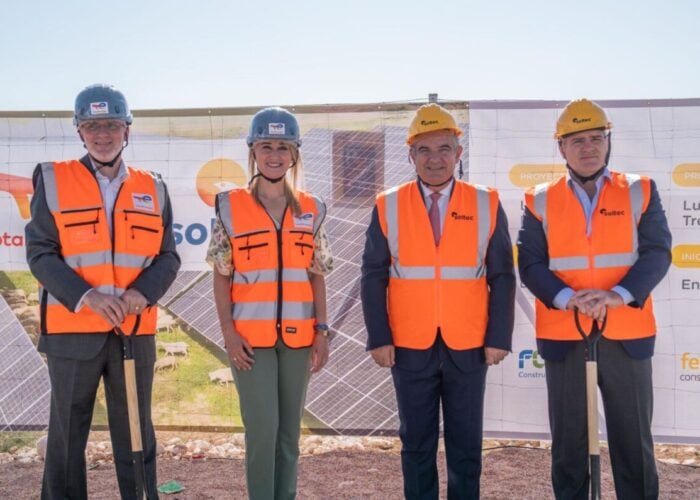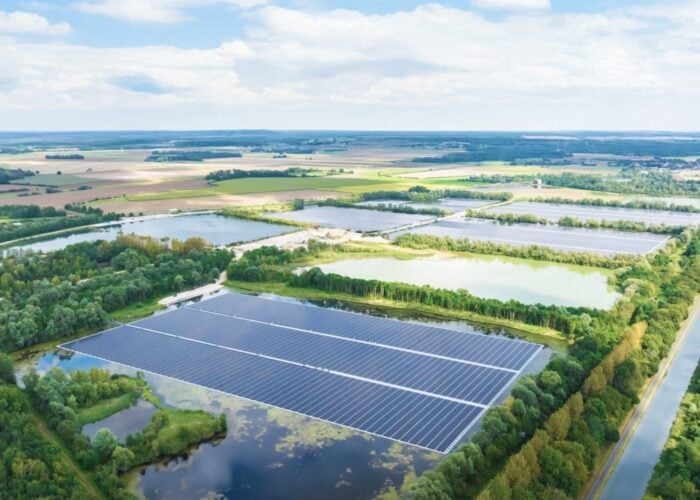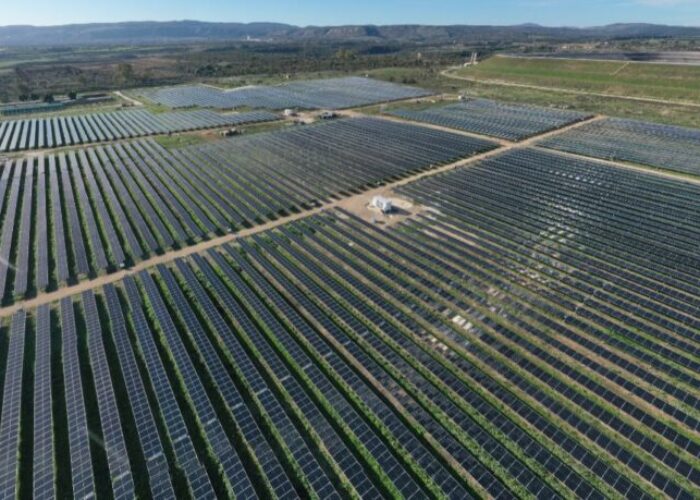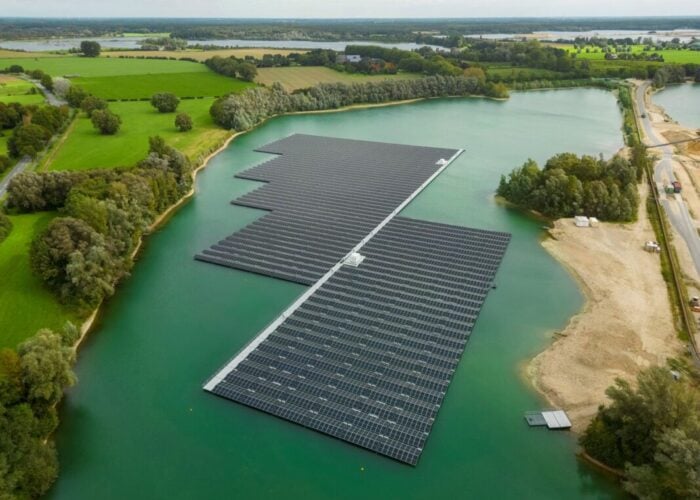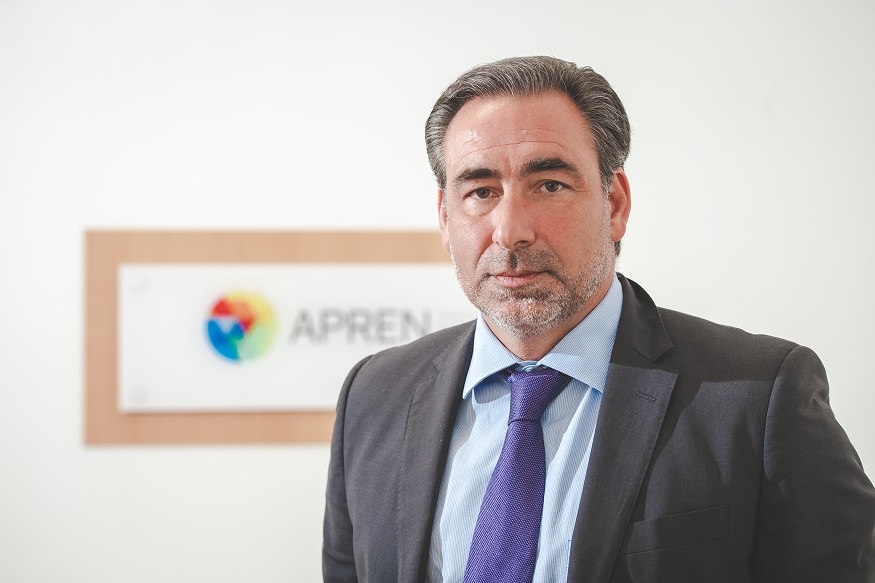
After receiving record-low prices in both its previous solar auctions, Portugal is now aiming to support the development of floating PV projects through its next tender process, set to take place in September.
However, complex licensing processes and grid connection scarcity could restrict deployment in the country, which is targeting 9GW of installed solar by the end of the decade.
Unlock unlimited access for 12 whole months of distinctive global analysis
Photovoltaics International is now included.
- Regular insight and analysis of the industry’s biggest developments
- In-depth interviews with the industry’s leading figures
- Unlimited digital access to the PV Tech Power journal catalogue
- Unlimited digital access to the Photovoltaics International journal catalogue
- Access to more than 1,000 technical papers
- Discounts on Solar Media’s portfolio of events, in-person and virtual
PV Tech interviewed Pedro Amaral Jorge, CEO of Portuguese renewable energy association APREN, to find out what is driving growth, how new policies could support the solar sector and if the country can reach its installation targets.
PV Tech: What is the outlook for 2021 in Portugal’s solar industry?
Pedro Amaral Jorge: Portugal is shown in the European panorama as one of the most promising markets for the development of photovoltaic solar energy, both for its privileged geographical location in terms of solar radiation, and for the strategic vision of development of the renewable sector included in the national energy and climate plan for 2030 (PNEC 2030).
At the end of 2020, the deployed capacity at national level for electricity generation, totalled 1,030MW, divided by 60% of centralised and 40% of decentralised, and representing an increase of only 153MW compared to 2019. This pace of development places increased pressure for the present decade with a view to achieving the NECP 2030 targets for installed power, i.e. 9GW for 2030, as this predicted a starting point for 2020 of 2,000MW for the photovoltaic solar.
This reality puts the spotlight on solar photovoltaic technology, as the one with the greatest development potential in the country. In 2019, with a first version of the NECP 2030, with the Roadmap for Carbon Neutrality for 2050, as well as with the European legislative package, Portugal created the legal framework for conducting competitive power allocation auctions, leaving open, however, the possibility of submitting projects via the market, by agreement with the network operator, ensuring part of the financing for the expansion of the electricity network.
It is through these two paths that the government intends to develop the renewable sector and, more specifically, the photovoltaic solar. As far as auctions are concerned, Portugal has already seen the launch of two auctions, one in 2019 and another in 2020, which led to the allocation of a total of 2,000MW of photovoltaic solar capacity.
In addition to the auctions, there is, as mentioned above, the option of agreements with the network operator. In this field, DGEG recently approved a list of 80 projects, whose joint power amounts to 17GW, and which will, in a next phase, be the object of joint analysis by [power grid operator] REN for a final decision on approval and agreement establishment. These projects, after being approved, add up to 3.5GW for 14 large power plants, which have already signed an agreement.
Are you happy with the country’s auction mechanism? What are your thoughts on plans to include floating PV in the auction this year?
The auction model introduced in Portugal had a huge media effect and placed Portugal in the spotlight, resulting from the competitiveness of the process and consequent tariffs. This effect is, in part, beneficial for the sector, because it captures the interest of foreign investors, and for contributing to the reduction of the electricity bill to the final consumer by decreasing the price of electricity sold in the wholesale market. However, these results were obtained by implementing a single project evaluation criterion: the price, i.e. the cheaper the project, the more chances the promoter has to stay with the connection point. This approach, although transparent and simple, brings with it some harmful impacts for the implementation of a sustainable sector and generator of national value, such as the contracting of services, labour and technology abroad, without privileging the national and international business fabric.
APREN welcomes the government’s commitment to floating plants in reservoirs, since their use for other purposes contributes to the fulfilment of decarbonisation goals and contributes to minimising the use of land that can be used for other purposes. In this context, it is important to mention that there is already such an installation in Portugal, in Alto do Rabagão, by EDP, which came to prove the viability of this technology and served as proof that our country is at the forefront when it comes to the adoption of disruptive installations.
About this, APREN defends that, despite the opportunity that this type of locations presents, the promoter must undertake the field work of analysing and discovering alternative locations, as they have the technical capabilities to be able to analyse the opportunity in the best way, this not invalidating that the auction design rewarded innovative solutions that bring positive externalities by choosing the implementation site.
What are your members asking for in terms of policy?
The renewable electricity sector today faces two major problems in Portugal that must be quickly addressed to ensure the achievement of climate goals and objectives: licensing and networks.
Regarding the licensing process in Portugal, it is now very time consuming and complex, and requires the promoter to contact several entities with different approaches and response times, which goes against the measures imposed by RED II, not only regarding the duration of the process, but also, regarding the necessary implementation of a single licensing desk, which in Portugal does not yet exist. I would like to point out that the measures imposed by RED II should be implemented this year, an aspect that is foreseen by the NECP 2030 but for which there are no legislative, regulatory and technical developments for its implementation.
In this context, I take the opportunity to communicate one of the ongoing projects, to be promoted by APREN, focusing on the licensing process in Portugal and its simplification and optimisation. In partnership with BioInsight, this project aims to bring together all the stakeholders that work in the licensing process, in order to survey the main problems and, together, work on solutions that lead to the simplification and streamlining of this lengthy process.
The problem of network availability is also a critical point that has served as a bottleneck for the development of new projects. In fact, in Portugal the network is considered as a scarce asset, which has been justification for an “unbridled” race both in auctions and in requests for agreements with network operators. It turns out that the Network Development Plans fall short of the availability needs imposed by the NECP 2030, a situation that has shown itself to be critical and of enormous concern in the sector, and which should be corrected by adapting the plans and investment appropriate to the needs of the sector.
The country’s national energy and climate plan includes an ambition of 9GW of installed PV capacity by 2030. Will this be possible to achieve?
Starting from the 1,030MW of deployed capacity in solar photovoltaic plants registered at the end of 2020, 7,970MW should be installed for electricity generation between 2021 and 2030 in order for Portugal to achieve the power targets. If we compare it with the wind path, for which, between 2000 and 2020, an increase of around 5,400MW in installed power was observed, it appears that an extra effort will be needed to install more power in half the time.
This extra effort is partly due to the resolution of problems and barriers that are currently identified in the sector, both with regard to the complexity and length of the licensing process, the unavailability and inadequacy of the electricity grid, and the inappropriate imposition of fees and disproportionate taxes on producers.
On the other hand, it is also required that a joint effort and alignment be implemented by all political entities and forces in order to create a stable regulatory and political framework for the promotion of a sustainable sector, enhancing added value for the country, environment and civil society.

